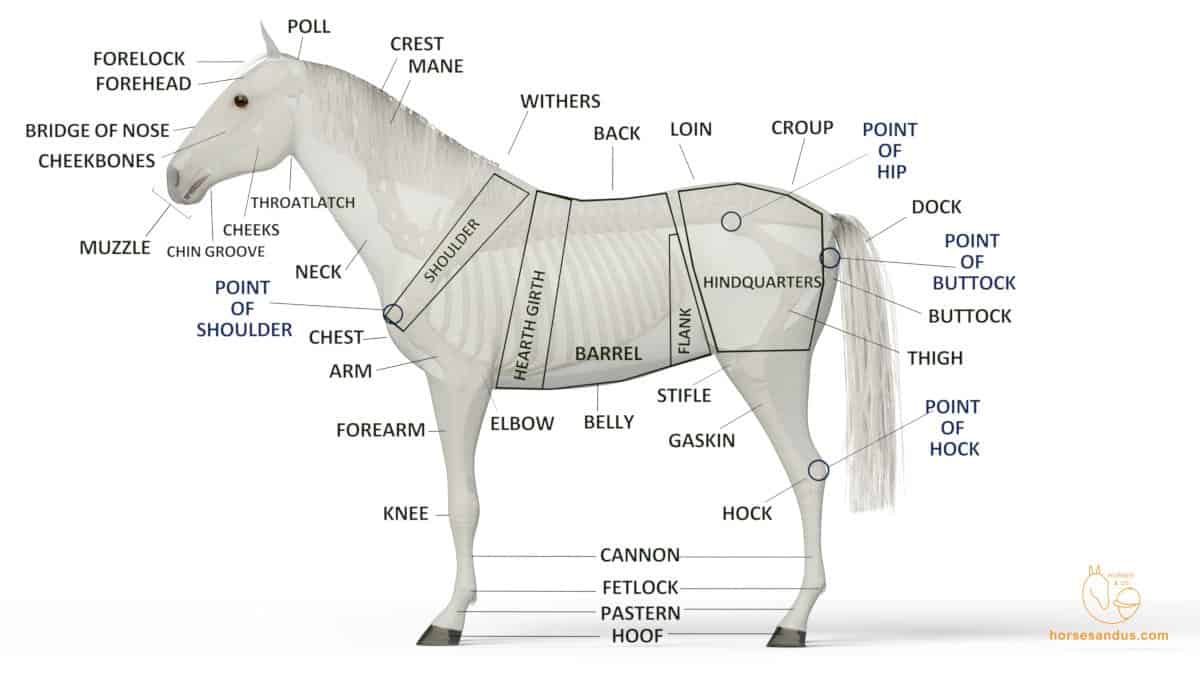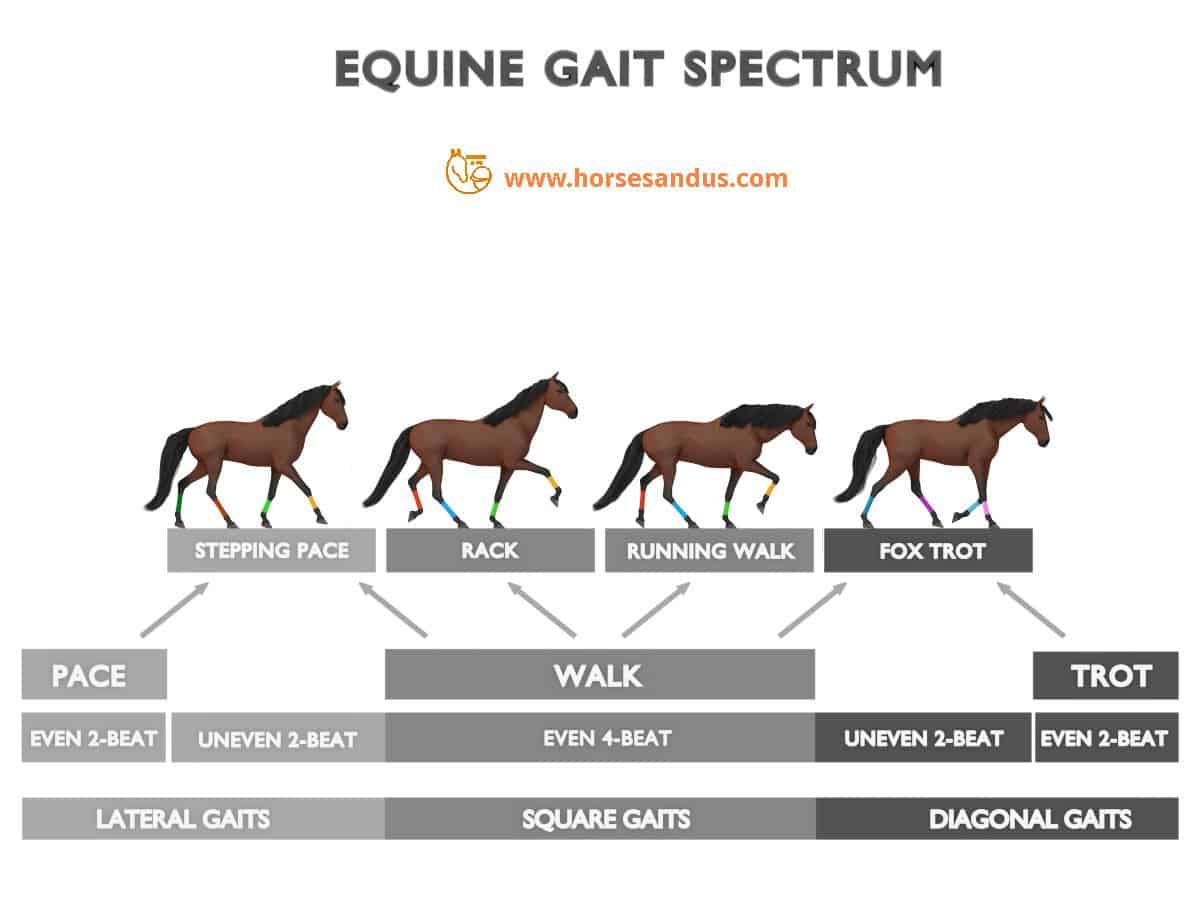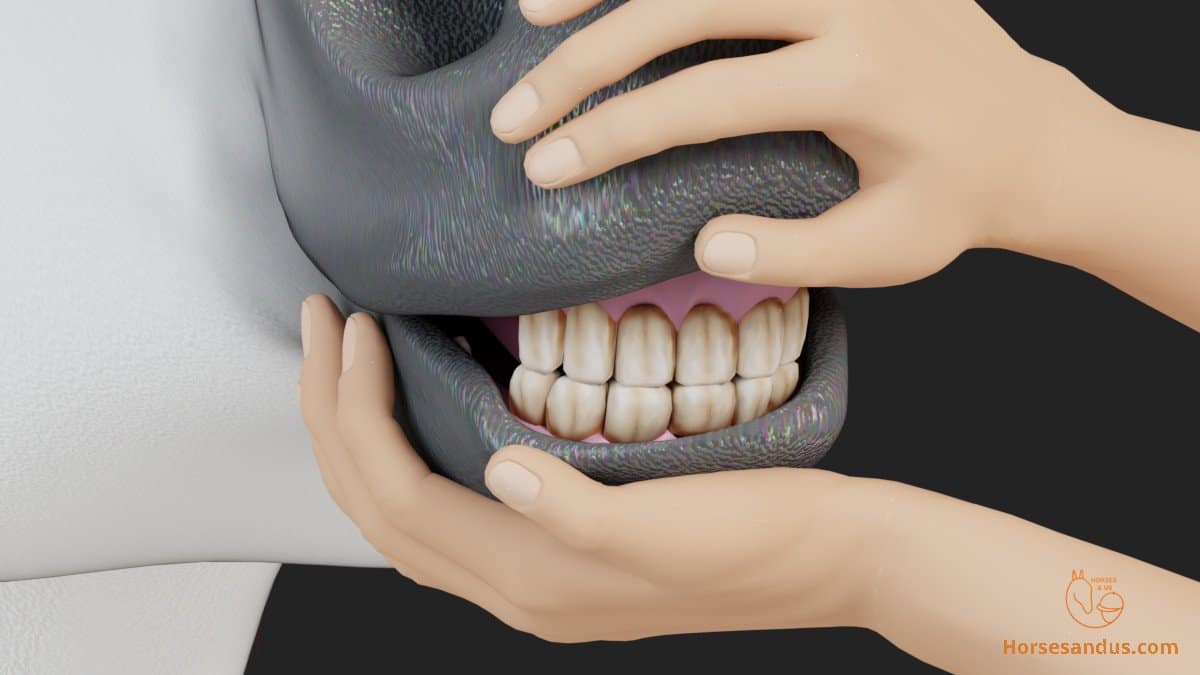Horses can have different types of manes, ranging from long luxurious manes to short, stiff upright manes. So why do horses have manes, and why are they so different?
Domestic horses have long manes due to selective breeding for aesthetic and practical reasons. They are attractive and useful for the rider to hang on to. A long forelock protects the horse´s eyes from the sun and insects.
Wild horses have short, stiff manes as an evolutionary adaptation to protect the horse’s neck from predator attacks and insects.
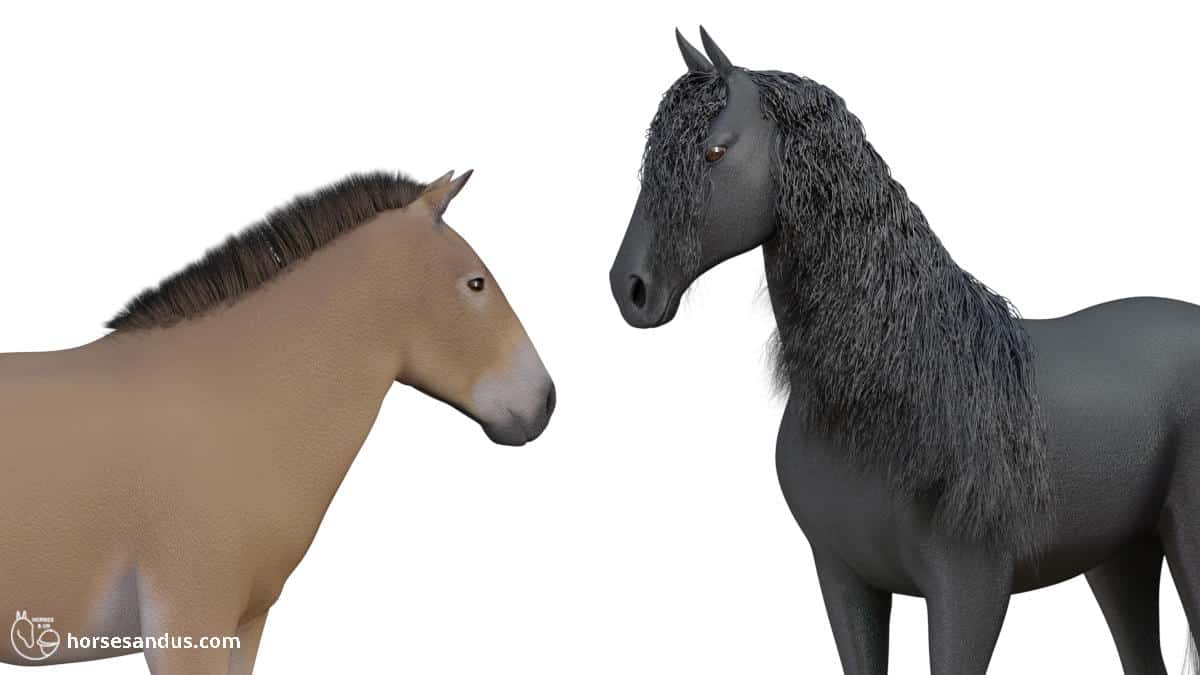
5 Purposes Of Horse Manes
Whether manes are short and stiff or long and flowing, they provide some very useful functions for the horse.
1- Horse Manes Protect the Neck from Predator Attacks
Predator attacks are often directed towards the horse´s neck because this is where the horse can least defend itself with kicks and bites. So it is believed that horses developed stiff upright manes to protect them, at least to some degree, from the predator’s bite. (source)
For the same reason, the mane will also protect the horse from fights with rival male horses.
2 – Horse Manes can Signal Good Physical Condition
When horses are in good physical condition, they store a layer of fat on the crest of the neck. So a larger neck will indicate that the horse is healthy and strong.
Predators prefer weaker prey to avoid injury when they attack. The horse´s mane is important for its survival because even if the horse is not in its best physical condition, the stiff upright mane gives the illusion of a fat neck. Therefore it signals to the predator that the horse is strong and healthy, demotivating the predator to attack.
3 – Horse Manes Protect Against Insects
Although the horse’s main defense from insects is its tail swishing back and forth, the mane also protects it from insects.
When horses twitch the skin beneath their manes the mane´s hairs will flick and chase away insects.
Long forelocks will also protect the horse´s eyes from insects. As the horse tosses its head, the forelock will swish away flies and other insects. This will act like a fringe mask, that many people put on horses to help them protect from insects.
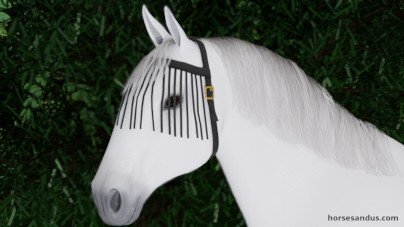
4- Horse Manes Protect their Eyes From the Sun
A long forelock that covers the face, shades the horse’s eyes from the sun. This avoids the need for a sun mask in the summer.

5- Horse Manes Keep the Neck Warm and Dry
The mane can keep the neck warm in the winter and help the raindrops run down the mane, keeping the neck dry.
Why domestic horses have long manes
Domestic horses have been bred for many years to grow long manes because this gives them a more attractive appearance.
Most horses can grow fairly long manes if proper care is taken. However, some breeds can grow very long and thick manes. Examples of these breeds are the Friesian, Gypsy Vanner, black forest horse, PRE (Andalusian), and Lusitano. On the other extreme, the Akhal-Teke breed almost doesn’t have a mane.
Domestic horses may have their long manes styled in many different ways for aesthetic and practical reasons. Some are left naturally long and flowing, while others are braided, and still, others are roached.
Natural Manes

A natural shiny flowing mane is lovely, especially if it is long and thick. However, to have this appearance, it needs to be correctly cared for.
4 Tips to Keep your Horse’s Mane Healthy and Shiny
1– The horse needs to have a quality diet with the right nutrients. Use supplements if needed.
2– The horse´s environment should not have objects that can damage the mane, such as splintered boards, trees, bushes, broken fences, and so on. If it is not possible to remove these objects, then the horses should have straight braids to prevent the mane’s hairs from getting tangled in these objects.
3– Treat any causes of itching on the horse´s mane. Horses will rub their neck on hard surfaces to scratch the itch, which will damage the mane. You may also want to apply this equine shampoo to soothe the irritated skin and help the horse stop scratching.
4– Wash the horse’s mane as often as necessary with good quality shampoo and conditioner, and then thoroughly rinse. Finally, apply a detangler before gently brushing it.
Braided or Plaited Manes
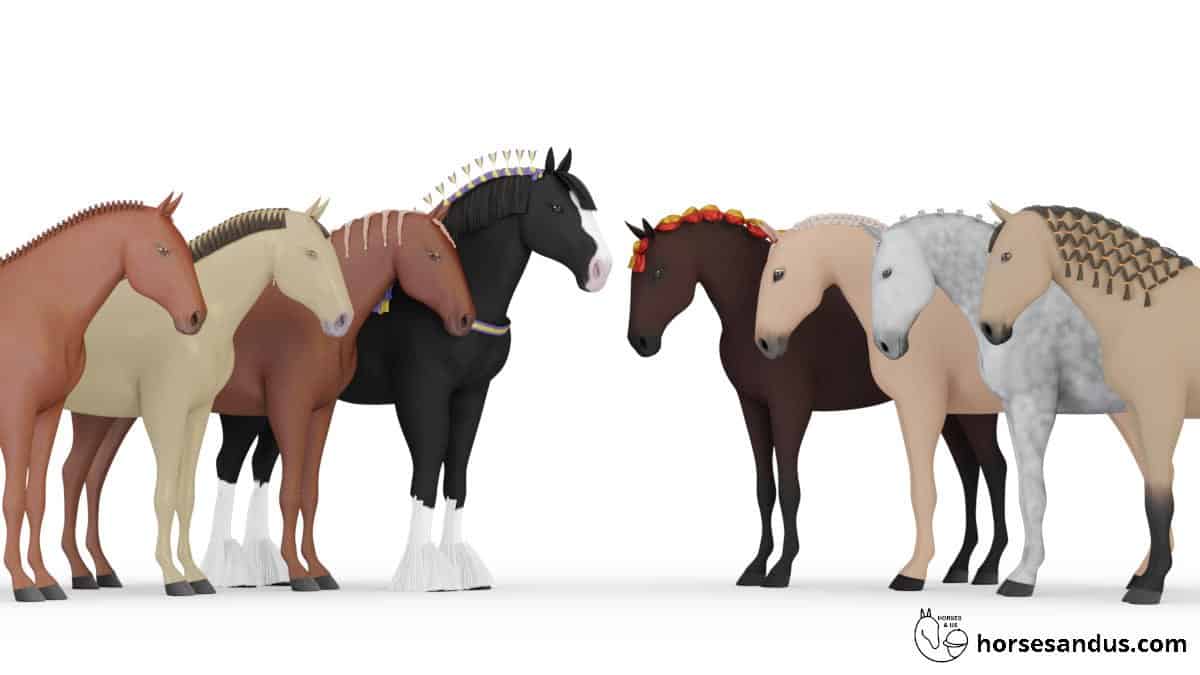
There are many different horse mane braiding styles, from the very simple to the more elaborate. The different styles will depend on the occasion, the equine discipline, and even the horse breed.
Roached or Hogged Manes

A Roached or hogged mane is totally shaved down to the base of the neck. This can be done for 3 main reasons:
1- Maintenance
When a horse’s mane is damaged this clean-cut will let it grow back evenly.
When horses are in the field, manes are sometimes roached to avoid all those knots in the manes and getting the mane tangled in trees, bushes, and fences.
2 – Disciplines
Roaching a mane is fairly common in Polo and hunting disciplines. This is done so the mane won’t interfere with the reins. Sometimes the mane is also roached for calf roping discipline so the rope won’t get tangled in the mane.
3 – Breeds
In Portugal, the manes of Lusitano mares and foals are roached, while the stallions are left with natural manes.
Fjord horses usually have their mane roached, although not cut all the way down to the topline. These manes have two colors and can look very pretty by using the two colors to create patterns.
The American Saddlebred “3-Gaited” horses are often shown with a roached mane to highlight their long and elegant neck.
How Fast Do Horse Manes Grow?
If a mane has been roached all the way to the base of the neck, it will take approximately 6-8 months for it to stop sticking upright and start falling to the side. Then it can take an additional year for it to grow back to its natural length.
The speed of mane growth will depend on the breed of the horse and other factors such as nutrition.
What is the Correct Side for a Horse’s Mane?
The horse´s mane can naturally fall on either side or even split over both sides. However, for most horses, it is more common to fall on the right side.
The mane is traditionally braided on the horse´s right side, so the rider can view the horse’s conformation before mounting on the right side.
In disciplines such as show hunting and eventing, it is considered correct to braid the mane on the right side, although in dressage, it can be presented on either side.
In some breeds, like the Lusitano, it is more common to see the mane fall to the left side. In this breed, the horses are usually presented naturally or with a running braid on the left side.
How to Train the Horse’s Mane to Lie on One Side?
The best way to train the mane to lie on one side is to braid it with straight braids on the preferred side. The weight of the braids will tame the mane to lie on that side.
Leave the braids for some days, then pull them out and repeat the braiding on the same side for some more days. Repeat this process for as long as necessary until the mane falls naturally to the side you chose.
Why do Horses Lose their Mane?
The mane can thin, become brittle and break off, leaving patches without hair. This happens mainly due to rubbing because of the following reasons:
Rugs
In the winter and sometimes also in the summer, we often put rugs on our horses. The rugs can cause heat rash, which leads the horse to rub and scratch the itchy area, resulting in mane damage and loss.
Lice and mites
These tiny insects irritate the horse’s skin under the mane, causing an itch that leads the horse to rub and damage the mane.
Flies and Midges (sweat-itch)
Sweat itch is common during the warmer months and is caused by an allergic response to the saliva of flies, in particular the Culicoides Midge fly. The horse will rub the irritated area, causing mane damage and loss.
Suggested Articles
